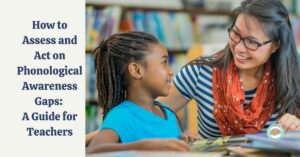Teaching students to count the number of syllables in words used to be all I really understood about syllables. I now understand the importance of syllable types and syllable division rules to reading instruction. Once children understand that larger words are made up of multiple syllables and that we can break words down into manageable parts/ syllables, their reading potential is endless. Having a strategy to read larger words gives students a functional strategy rather than guessing or looking for picture clues. Knowing syllable types and syllable division rules helps readers determine the sound of the vowels. This knowledge also helps with reading accuracy, and fluency, and is the building blocks for spelling.
Let’s start with the basics
Syllables are defined as a unit of pronunciation, a word part, having one vowel sound. A syllable consists of one vowel sound and whatever consonants are pronounced with it. A vowel sound can be created by one vowel, like dog, or more than one vowel working together, like in sleep.
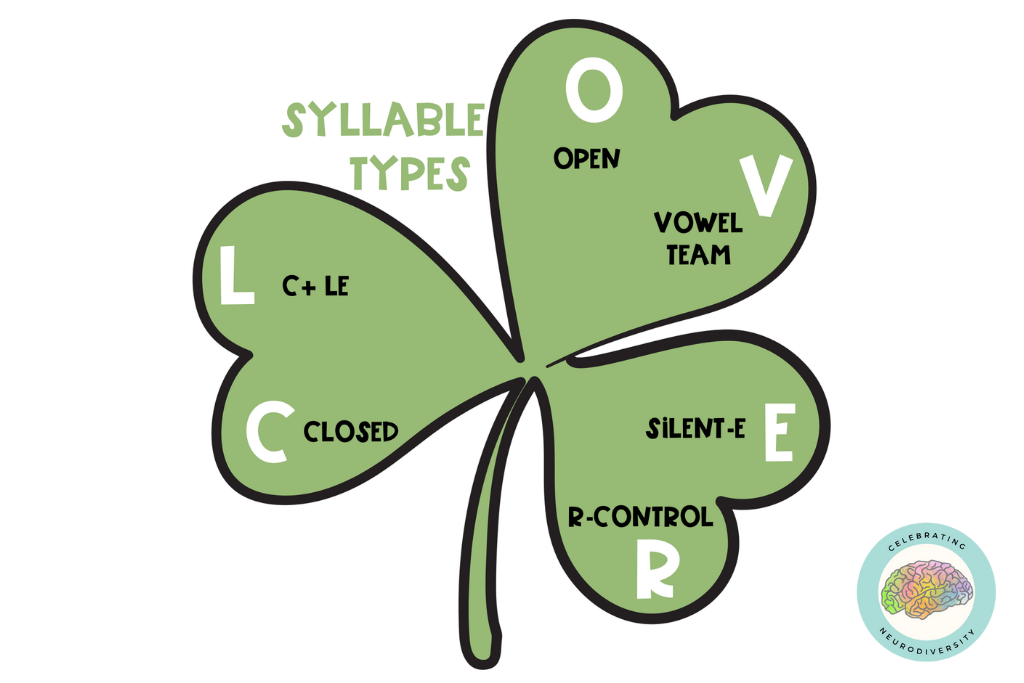
6 Syllable Types
All words can be divided into 6 syllable types. We have over a million words in our language yet all these words can be broken down into 6 syllable types. This is commonly known as CLOVER. These syllable types include; open, closed, vowel team, r-controlled, silent -e and consonant le. Let’s look more closely at each syllable type.
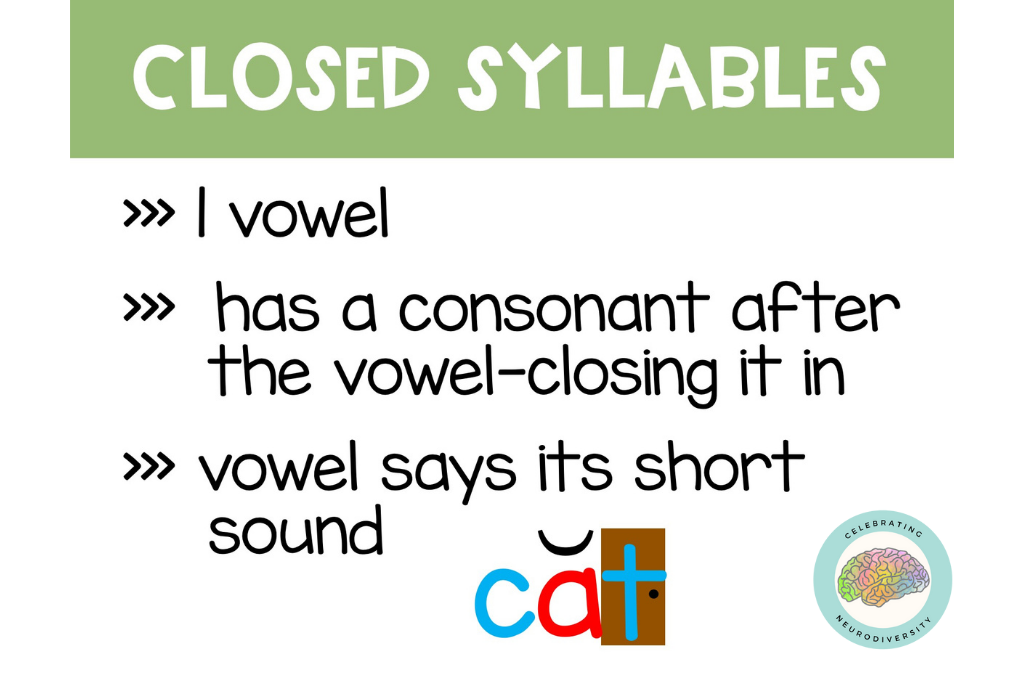
Closed Syllables
Closed syllables are the most common syllable type in English. They account for about 50 percent of syllables. Closed syllables follow two rules. 1. They only have one vowel. 2. The vowel must be followed by one or more consonants. When a syllable is closed, the vowel will make its short sound.
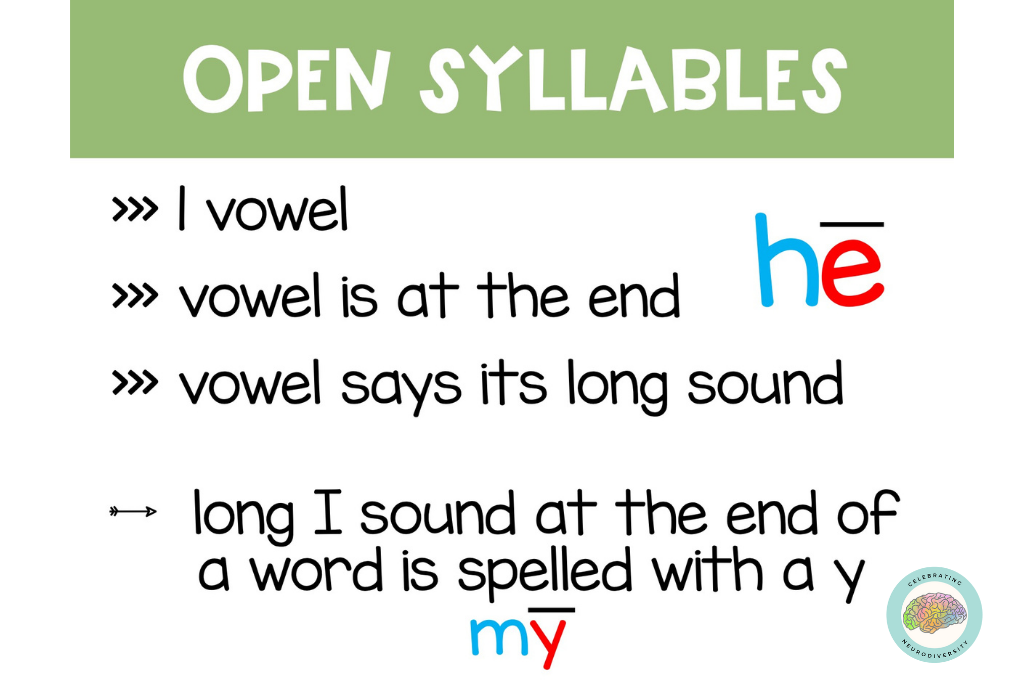
Open syllables
Open syllables are another syllable type and also follow two rules. 1. They only have one vowel. 2. The vowel is at the end. When a syllable is open, the vowel will make its long sound.
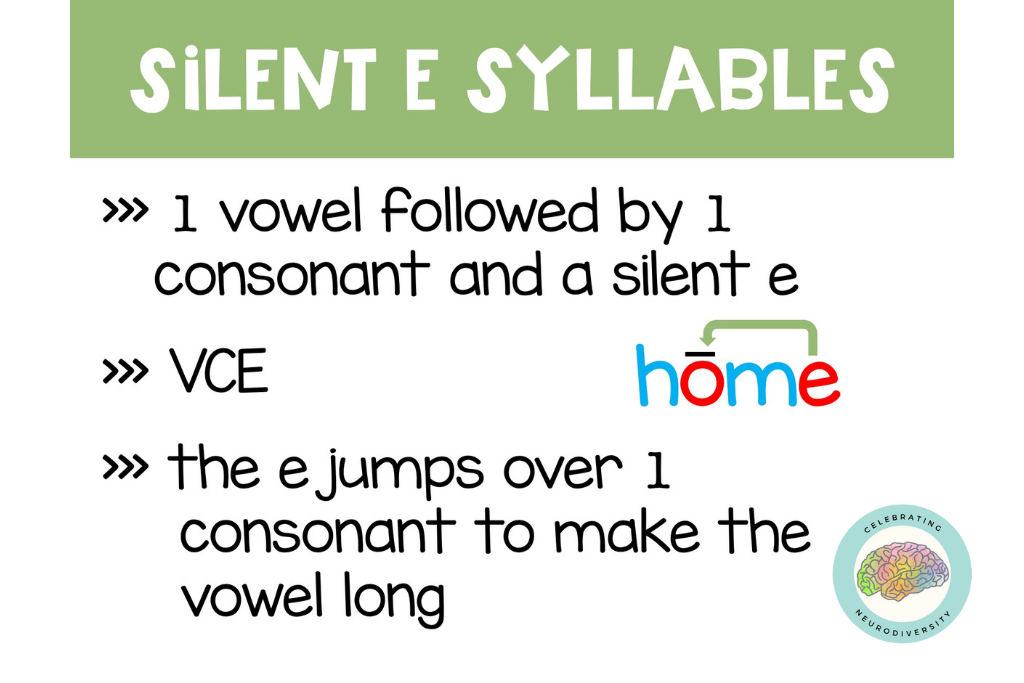
Silent e Syllables
Silent e syllables are also known as magic e syllables. They follow a pattern of a vowel, then a consonant, then an e. The silent e jumps over one consonant to make the proceeding vowel long.
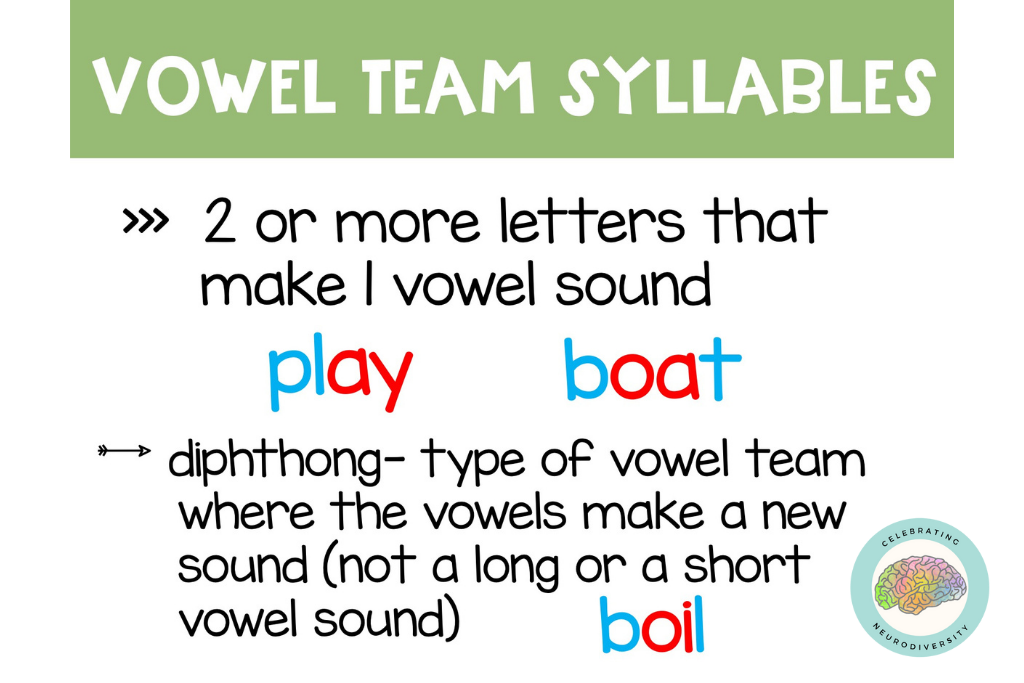
Vowel Team Syllables
A vowel team syllable has two or more letters that make one vowel sound. A vowel team can represent long, short, or diphthong vowel sounds. These syllables occur most often in old Anglo-Saxon words. Diphthongs are a type of vowel team where the vowels make a new sound, not a long or short vowel sound. An example of a diphthong is oy.
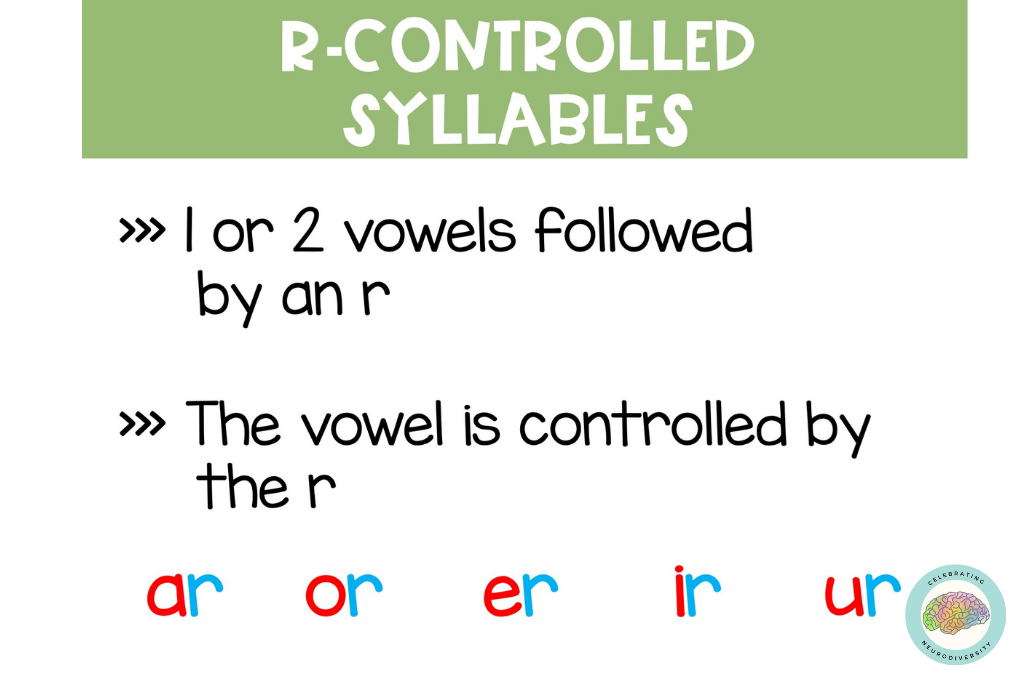
R-Controlled Syllables
R-controlled syllables are also known as vowel-r syllables. These syllables have one or two vowels followed by an r. The vowel sound is controlled by the r.
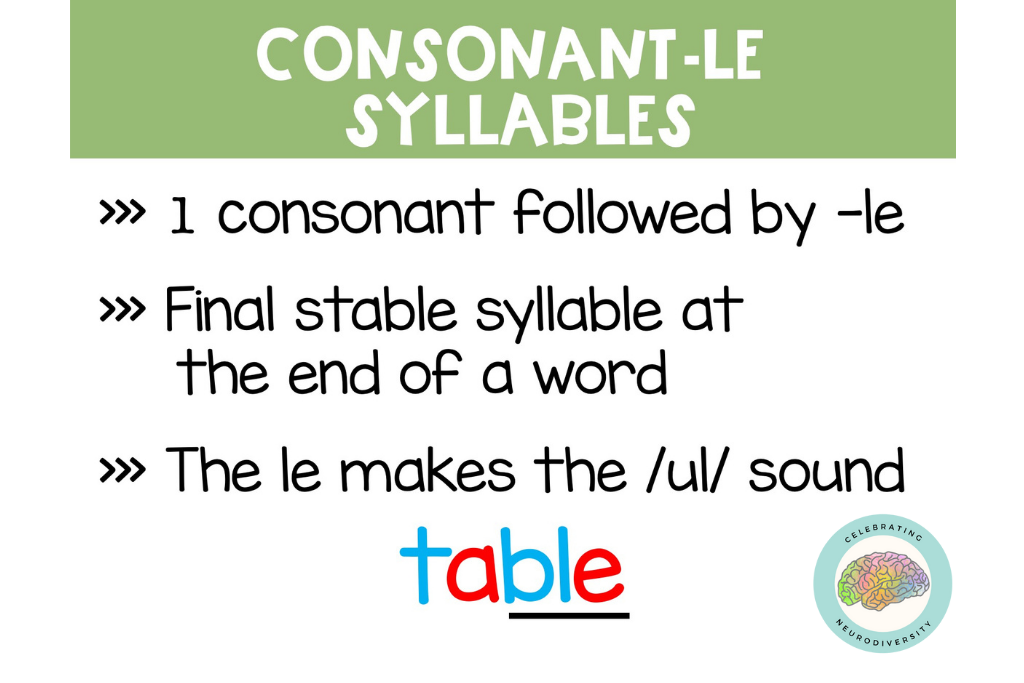
Consonant-le Syllables
Consonant -le, also known as a final stable syllable has a consonant, followed by an l, and then an e. Here is a list of the consonants- followed by an le pattern that we use in English words.

Games to Practice Syllables
Games are a great way to practice and reinforce new skills. You may like to add some of these to your syllable instruction. My students love these games!
Match it- Syllable types
VCV Syllable Division Game with closed and open syllables
VCCV Syllable Division Game with closed syllables
VCCV and VCV Syllable Division Game with open, closed, and silent e syllables
Read and Identify Syllables Word Game
Do you want to learn more about syllables or English rules?
Rules of English-Breaking the Code- It’s More Reliable than you Might Think
Download the free guide- 4 Essentials to Reading Success
Giving children the knowledge and strategies of syllable types helps with reading accuracy, fluency, and spelling. Teaching syllables in words should be a goal in your literacy instruction.






